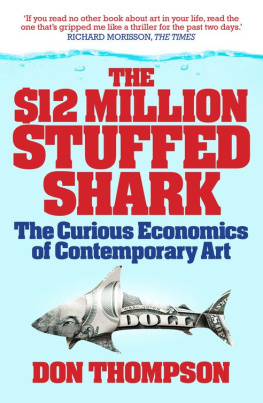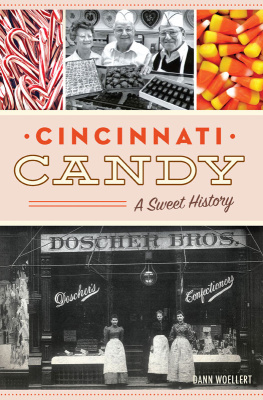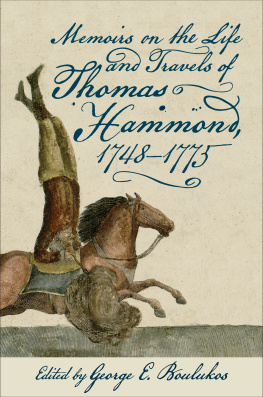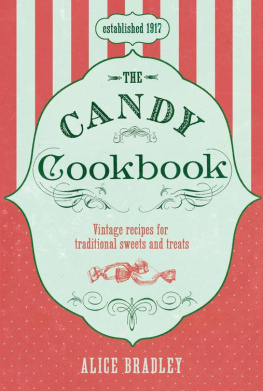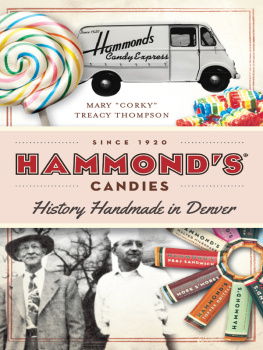
Published by American Palate
A Division of The History Press
Charleston, SC 29403
www.historypress.net
Copyright 2014 by Mary Corky Treacy Thompson
All rights reserved
First published 2014
e-book edition 2014
ISBN 978.1.62585.248.9
Library of Congress Control Number: 2014952361
print edition ISBN 978.1.62619.716.9
Notice: The information in this book is true and complete to the best of our knowledge. It is offered without guarantee on the part of the author or The History Press. The author and The History Press disclaim all liability in connection with the use of this book.
All rights reserved. No part of this book may be reproduced or transmitted in any form whatsoever without prior written permission from the publisher except in the case of brief quotations embodied in critical articles and reviews.
The soul is dyed the color of its thoughts. Think only on those things that are in line with your principles and can bear the light of day. The content of your character is your choice. Day by day, what you do is who you become. Your integrity is your destinyit is the light that guides your way.
Heraclitus
In memory of Carl T. Hammond Sr. and Carl T. Hammond Jr., whose lives epitomized this philosophy
In honor of Carl T. Hammond III, who shared their stories
Contents
Acknowledgements
There is an apprehension inherent in attempting to thank all the individuals who have contributed to any book, but it is worse still not to make the effort; I owe a debt of gratitude to all those who guided me in my research and opened up the wonderful world of candy making.
To Bill Hansen, Denver attorney and amateur local historian and author, I owe tremendous thanks for his invaluable list of resources and research possibilities. Not only did he jog my memory about available tools, but, incredibly, he supplied me with the actual newspaper citations that he had unearthed in the digital collection at the Denver Public Library: Western History and Genealogy. He also loaned me several books from his personal collection that proved invaluable to me as I broadened my knowledge of the history of Denver and, in particular, North Denver, where the history of the Hammonds Candy Company took place.
Special thanks, also, to the staff at the Denver Public Library: Western History and Genealogy for their diligence in assisting me with additional sources of information and for their patience in introducing me to the idiosyncrasies of microfiche. I want to thank staff members at History Colorado for introducing me to information in the Colorado Yearbooks and my daughter, Julia Thompson, for providing news accounts from current media.
Anna Abromowich, sales and marketing coordinator at Hammonds Candies, was unfailing in her prompt responses to my e-mail inquiries and her assistance in setting up appointments and introducing me to Hammonds personnel. Kammy Stucker, production manager, helped plan my kitchen tours and photo shoots, and I owe thanks to Ginny Gleason, Melissa Joslin and Jane Powell for their continual welcome at Hammonds tour office. Mickey Theuambounmy graciously shared her experiences of thirty-two years as a Hammond employee.
I am grateful to Ralph Nafzinger, who shared his insight into the transition that Hammonds Candy Company made as it evolved from a family-owned company through its first outside ownership to its current structure. His knowledge of past and present production and sales, as well the culture of the different phases of the company, was most helpful in preparing this manuscript. Of course, none of this would have been possible if Andrew Schuman, CEO of Hammonds Candies, hadnt generously welcomed me and shared his goals.
My thanks in preparing this manuscript also go to Becky LeJeune, commissioning editor at The History Press, for her guidance, encouragement and professional recommendations; to Michael Scalisi for his many contributions to the color photo section; and to Lloyd Rich for his advice.
Most important in the writing of this book, however, was the opportunity to hear the stories of the Hammond family, to learn its values, to understand how its members persevered and succeeded and maintained their company. I came to know and admire Carl and Laura and Tom and June and their children and grandchildren. For that I thank George Hammond for taking the time to visit with me. To Emery A. Dorsey IV, Robin Hammonds husband, I am indebted for opening the wonderful world of the confectionary art, as well as his family stories.
This book, however, would never have been written without Carl T. Hammond III. From the time that I first contacted him, Carl has been unfailing in his information about the family history, his knowledge of the industry and his understanding of the relationships that were the underpinning of the Hammonds Candy Company. I cannot thank him sufficiently for his interest and willingness to explain processes (and to correct my misconceptions) and for enhancing these pages with descriptive, enlightening and often amusing anecdotes about the family members. I thank him, as well, for loaning his photographs and for his willingness to edit, correct and improve this manuscript.
To everyone, then, to all those individuals who generously spent time with me to bring the story of Hammonds Candies to lifethank you, this is your book!
Chapter 1
Schools Out
GRANDPA PEACH
Denver mornings start with a dry, cool and invigorating temperature, which makes it easy to look forward to the day, but Carl Hammond didnt have great expectations when he awoke at the crack of dawn on that late summer Monday. Today would be his first day of high school, and he wasnt one bit excited. In fact, he had very mixed feelings at the thought because he had already decided that what he had learned in elementary school was all the education he needed for the time being. He knew his older brother Harry didnt agree with him, but despite the encouraging words of his brother, Carl felt four more years at school would be useless. He realized it was important for him to earn some money if he wanted to enjoy more than the room and board and bare essentials that his father would provide.
Harry, two years older and already aware of the courses he would need if he went into the construction business, felt no such qualms. But he understood that the prospect of sitting in a classroom at North High School bored Carl, who was anxious to find his way in the workaday world. Like an elder brother, however, he urged Carl to drag himself out of bed, get dressed and set out for school. The iconic North High School had not yet been built on Speer Boulevard, so Carl presented himself that day at Ashland School, which then housed both elementary grades and high school. Ironically, about thirty-five years later, he would build a factory for his Hammond Candy Company directly across the street. But Carls early opinions turned out to be well founded, so when he got home that afternoon, he announced that he didnt need any more education. Fine, his mother replied, but youre not going to lie around the house. Go get a job.

Portrait of Carl Hammond Sr. as a young man. Carl T. Hammond III Family Collection.
And thats just what Carl Hammond didhe got a job as an apprentice for the Cosner Candy Company on Welton Street.
Independence was a trait he had inherited from both his parents and his grandmother as well. She had become a widow at a young age, but that situation wasnt unusual on the plains, where accidents claimed many lives and some men were felled just by the exhaustion of tilling the soil. It was hard, hard work running a wheat farm successfully enough to provide for a family of five sons and, hopefully, put something aside to provide for old age. It was harder still for a young woman who now had all the household chores and the vegetable garden to manage, but it was possible for someone like her who took pride in her resilience. She was undoubtedly aware that with her brood she wouldnt seem very attractive to the bachelor farmers in the area, and she might easily not have found the thought of another marriage very appealing. Instead, she hitched up her buckboard and drove into town to the feed store, where she had enough credit to purchase sufficient seed for the next years crop. At a time when a weaker woman might have been tempted to pull up her roots and return to her family, or move to another place for easier opportunities, or just give up entirely, Carls grandmother persevered, raising her sons until they were grown. When Carls father, Thomas Hammond, known as Peach, felt the pull of independence and announced his intention of looking for greater opportunities in California, she let him go. If the prospects of the uninhabited land offered by the Homestead Act of 1862 had lured the family to Lawrence, Kansaswhere Peach was born on August 9, 1867perhaps the growth of the states population prompted Peach to think of trying his chances elsewhere. There had only been 107,206 people living in Kansas in 1860, and by 1880 that number had exploded to 996,096. It was a Hammond characteristic to seek personal, if not necessarily physical, space for growth, and with four other brothers living on the farm, perhaps Peach felt that was getting a bit crowded, too.
Next page





